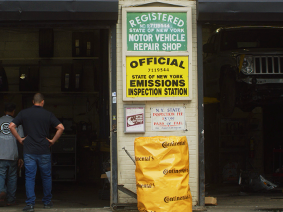

Focusing on grounding paths pays dividends
Whether you follow conventional or electron current theory, it boils down to one simple rule: Electricity will find a way to reach the battery. If the electrons can’t make it to their destination through the proper channels, they will try alternate pathways. This is when things stop working, don’t work as designed, or suffer major damage.
This is the time of year that bad electrical connections often reveal themselves. Cold engines with cold oil need more energy to crank, but batteries are producing less power in the cold and cold fuel is slower to atomize. This puts significant strain on the electrical system, especially while starting.
Grounds are often the weak link in the chain. Heavy current loads like the starter can seek a ground through modules, transmission parts - anywhere that the electrons can find a path. Bearings have been known to show signs of welding, components can often fail early from trying to operate with low voltages, and even throttle cables have seized due to the incorrect flow of ground current.
When engineers design the electrical system for a car, they install the bare minimum number of ground connections. As the years go by, however, accessories are added, fasteners work loose, corrosion sets in, and old components need more current to operate. Now the vehicle has excessive voltage drop on the ground side. Many components may be affected.
What are the causes of “bad grounds?”
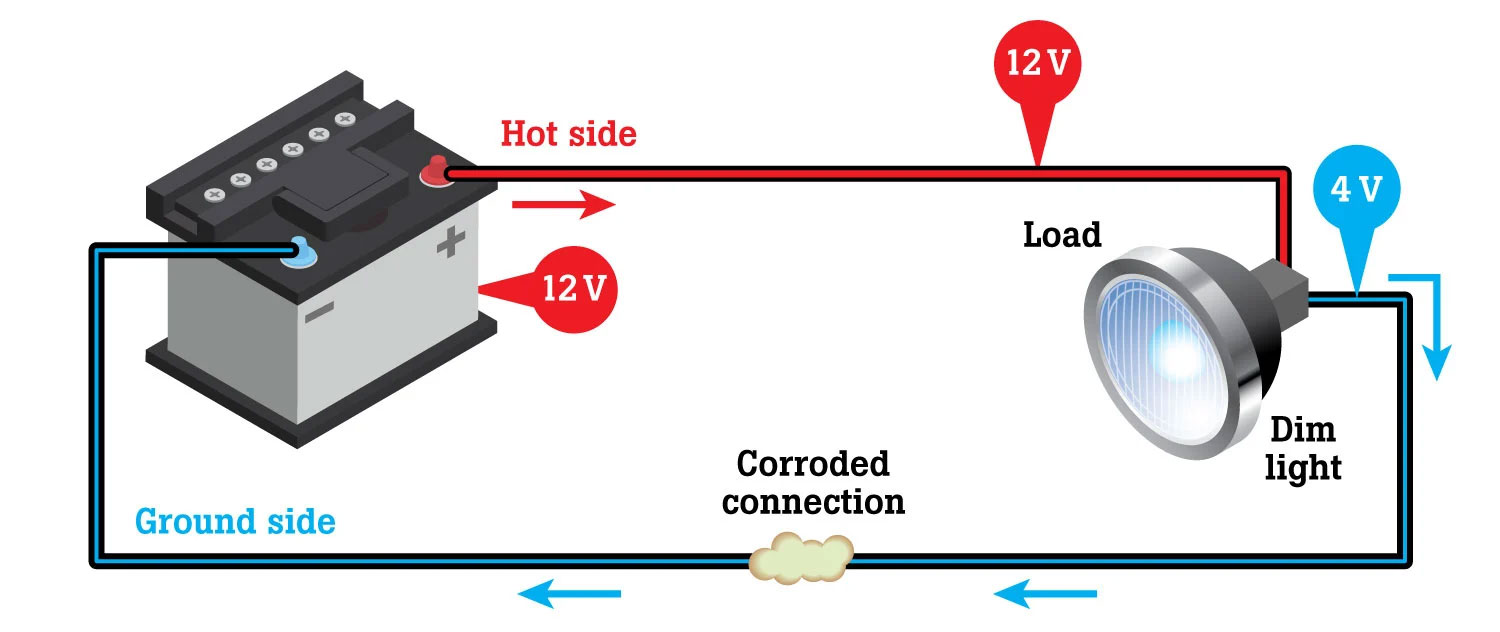
- Corrosion: The most common cause, where connection points become corroded due to moisture and exposure to elements including road salt.
- Loose connections: A loose or poorly tightened ground wire at the battery or chassis can disrupt the electrical flow.
- Damaged wires: A broken, or frayed, ground wire can also lead to a bad ground.
Diagnosing voltage drop will take some diagnostic work:
- Learn what “normal” voltage drops look like by testing healthy vehicles.
- Visual inspections miss most cases of electrical voltage drop. You usually can’t see the corrosion inside a connection or the damaged wire that is causing the problem. Test the circuits.
- Ground-side voltage drop, an often-overlooked cause of electrical trouble, can cause many problems. Any circuit or component is only as good as its ground. That’s why parts are often replaced unnecessarily when the problem was actually a weak ground.
- The more sophisticated electrical systems become, the more important their grounds are. Modules are everywhere on the vehicle, and most do not have separate ground wires leading to the battery. These devices are usually grounded to the engine or body. Rust, grease, vibration, or haphazard repairs often restrict the flow of electrons back to the battery.
- Many components, such as engine sensors, share a common ground. One bad ground complicates diagnosis because it affects several components at once. This is where a “ground distribution” chart is valuable because it tells you what components are attached to each ground.
- Some OEM diagnostic charts recommend checking grounds last. It’s a better use of time to check a circuit’s voltage drop rather than it is to chase long lists of symptoms or “hunches.” Chasing hunches is no substitute for thorough voltage drop testing.
How much drop is too much?
- No more than 100 millivolts (0.1 volt) for computer and sensor circuits
- No more than 500 millivolts (0.5 volt) for any other circuit
Quick test to confirm bad main ground connections:
Clamp a jumper cable on the engine or chassis. Clamp the other end to the negative battery post. This is a “super ground” – high capacity, easy to secure, and a quick confirmation if there is a ground issue.
Fixing a bad ground:
- Cleaning ground connection lugs: Remove corrosion from the ground wire connection points using sandpaper or a wire brush, then reattach the wire securely. After repairing connections, seal the area with some paint or other anti-corrosion treatments.
- Replacing wires: If the ground wire is damaged or corroded beyond repair, replace it with a new one.
- Tightening connections: Ensure all ground wire connections are properly tightened.
- “STAR” washers are great for use on ground lugs; they really improve the connection and prevent it from coming loose.
How to test for voltage drop:
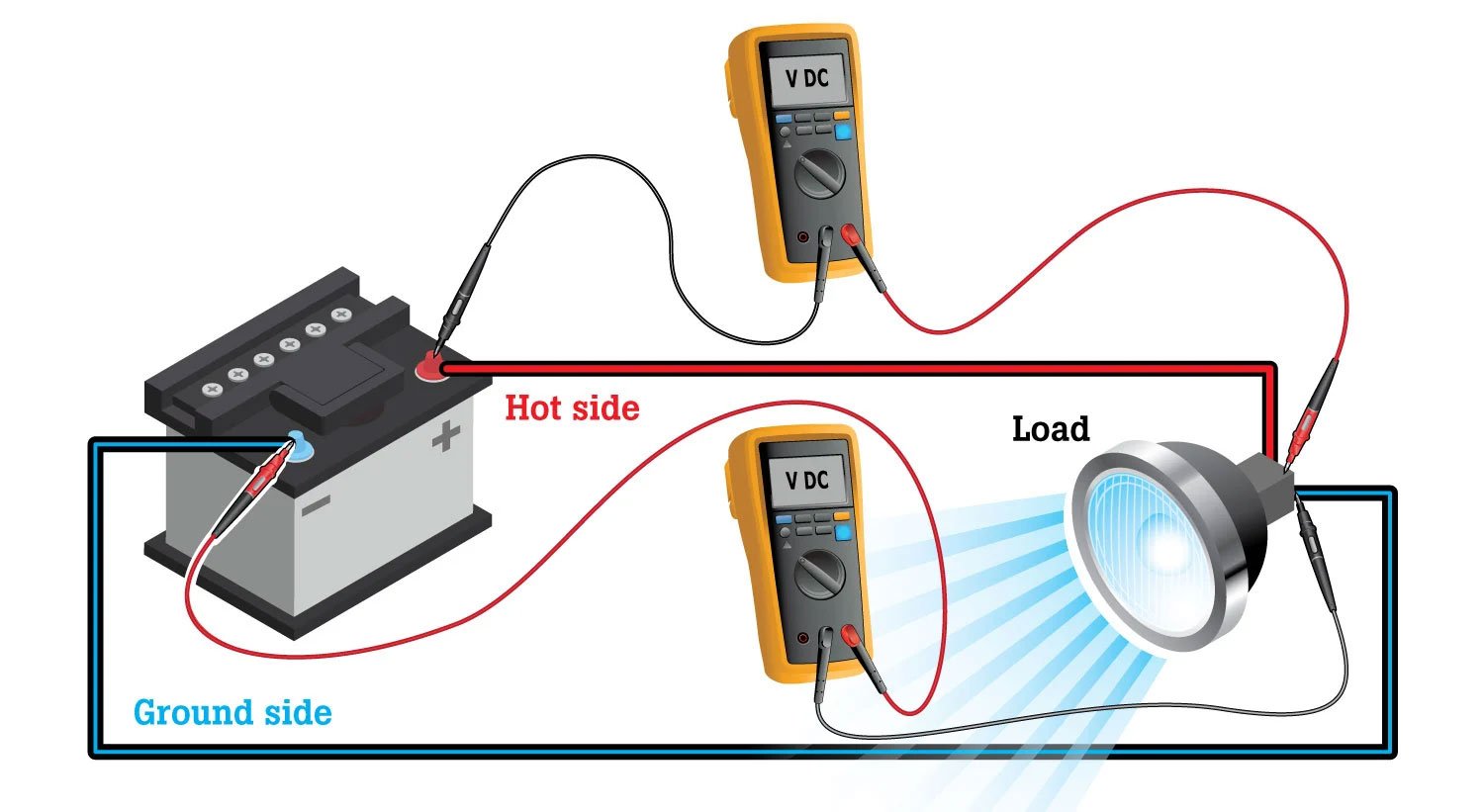
What about the positive side of the system? Connections on the positive side are usually multi-pin. While those can develop pin-fit issues, fretting corrosion, and moisture corrosion, issues on that side will often be confined to one or two systems. Ground problems can affect several systems at once.
Have accessories been installed prior to the problems developing? Loose bolts can cause several systems to act up.
Diagnostic Aids
Ground distribution charts can help you determine what components share a ground:
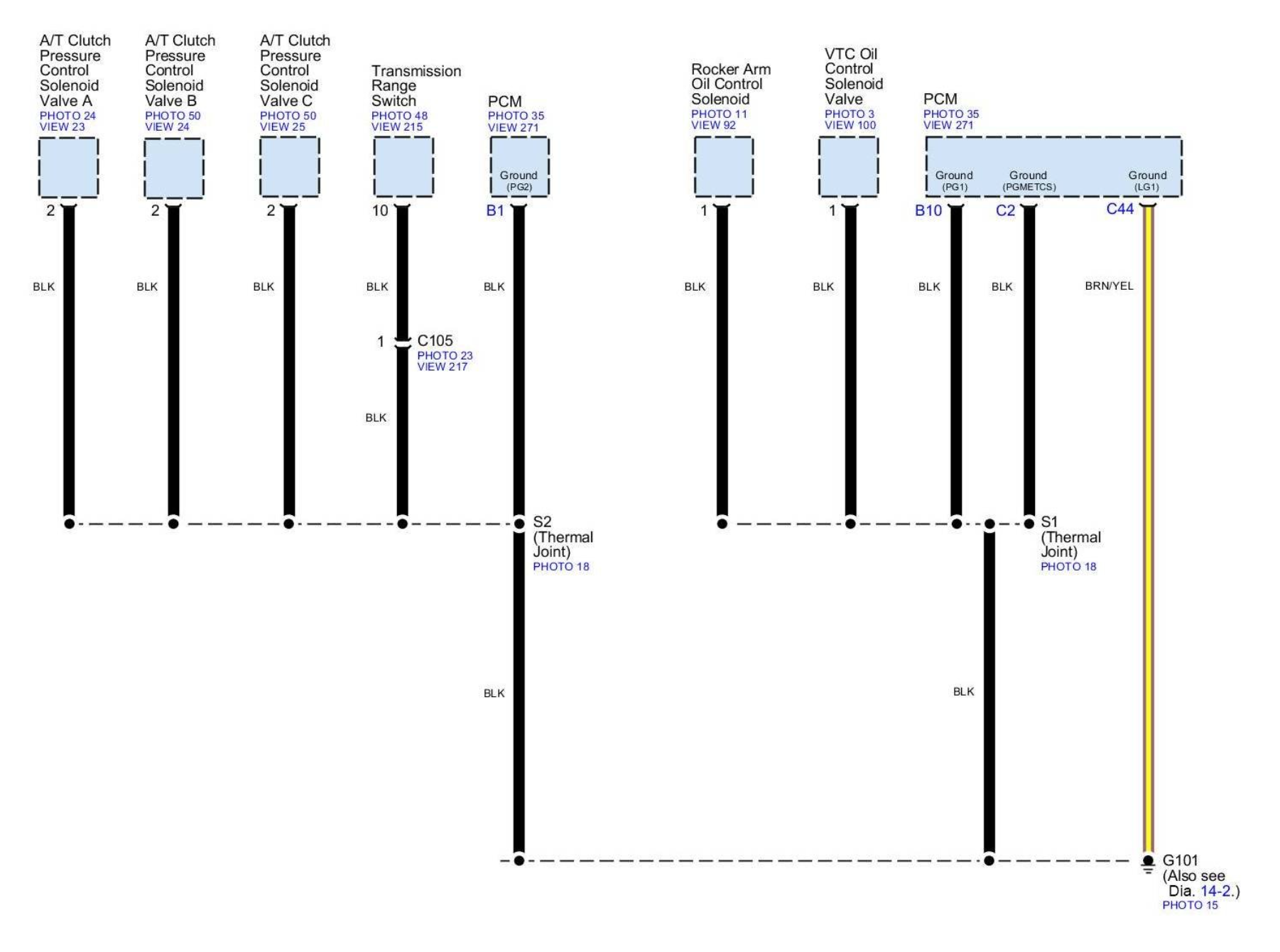
Location photos make it easier to find a ground:
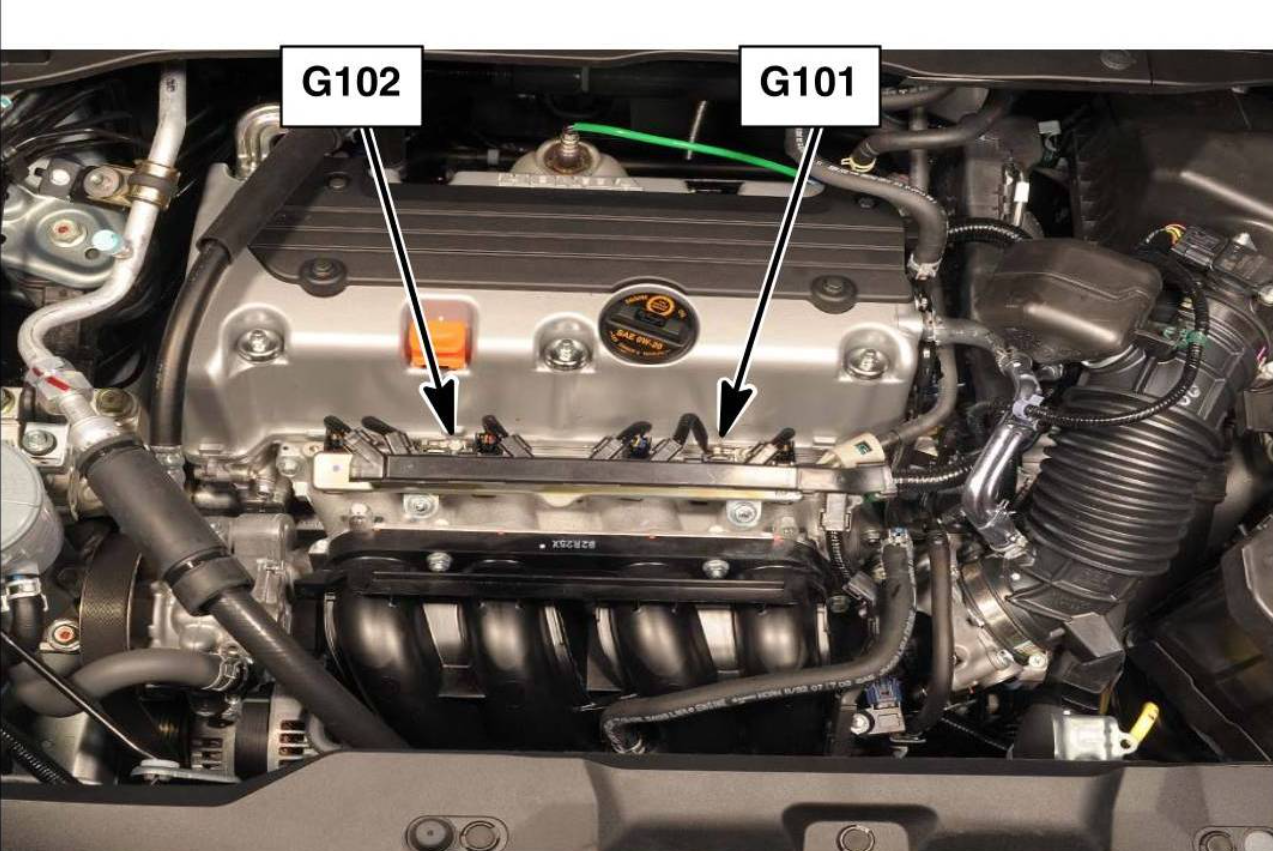
Remember: Rust never sleeps
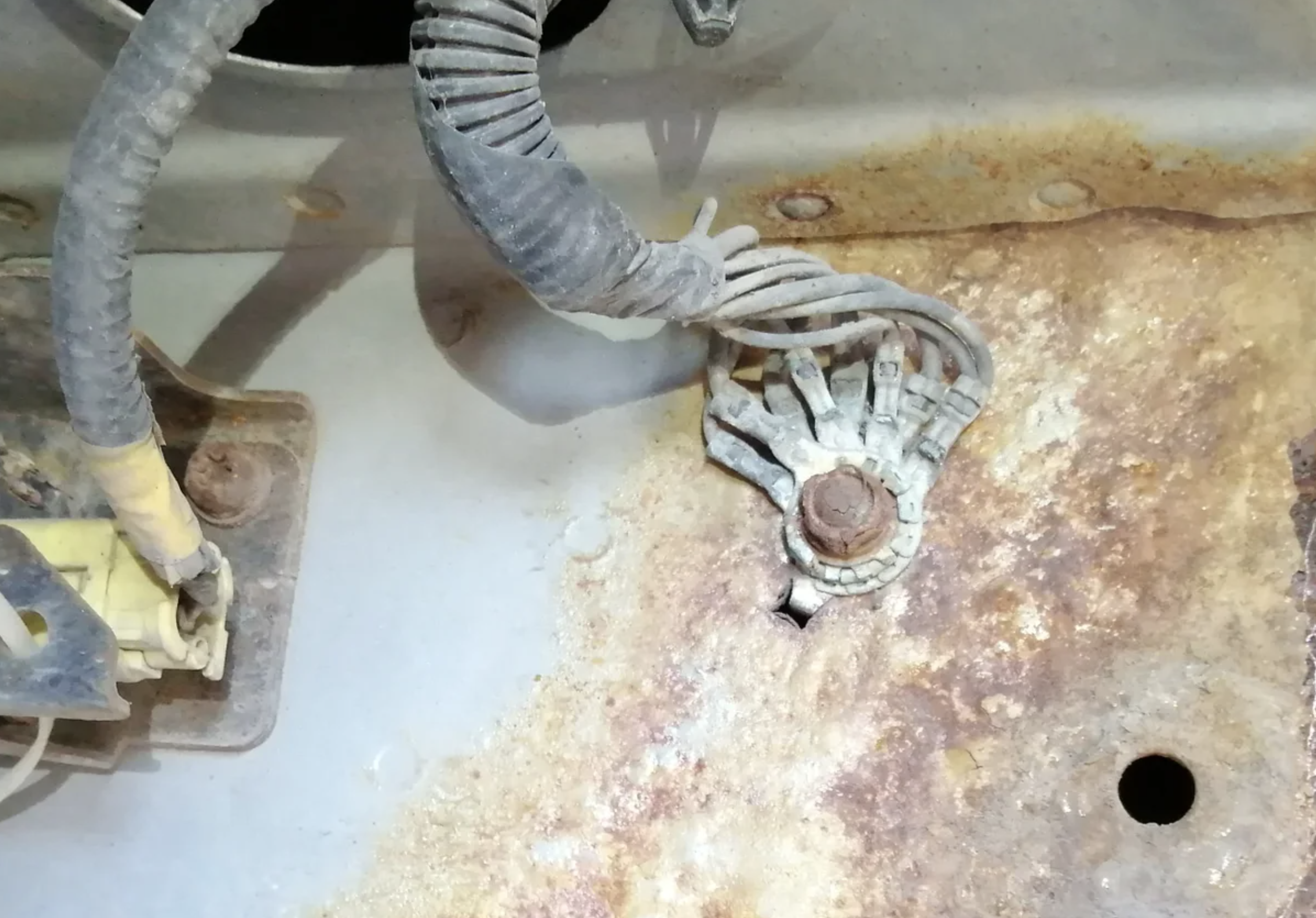
Any of these conditions can cause perplexing symptoms, but by checking the ground voltage first, you have a much better chance of identifying the problem faster than chasing hunches.
Want to see how ALLDATA can improve tech efficiency? Check out our suite of products, each designed to contribute to both shop efficiency and productivity.


